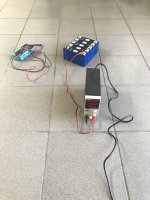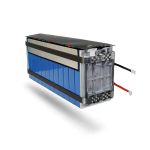lord_gammon
1 mW
- Joined
- Dec 14, 2022
- Messages
- 16
Hi,
I have a prismatic NCM pack of 20S 92Ah 3.65V nominal cells in an electric motorbike. They have a Daly BMS set to protect them from over discharge, but somehow it didn't do that and whilst stood through winter they have run down to a range 1.8V to 2.2V. Since it's like $900 worth of cells, I would like to recover them, but not burn the house down trying. I hope that since they had no significant load whilst under-voltage this will help.
Anyone got some practical experience of this, or handy tips?
Should I connect all the cells in parallel and balance them first?
What is a safe current and voltage to use for charging?
Are they likely to be permanently damaged?
P.S. Daly BMS are useless, in case anyone didn't know already.
Thanks, I appreciate you helping.
- N
I have a prismatic NCM pack of 20S 92Ah 3.65V nominal cells in an electric motorbike. They have a Daly BMS set to protect them from over discharge, but somehow it didn't do that and whilst stood through winter they have run down to a range 1.8V to 2.2V. Since it's like $900 worth of cells, I would like to recover them, but not burn the house down trying. I hope that since they had no significant load whilst under-voltage this will help.
Anyone got some practical experience of this, or handy tips?
Should I connect all the cells in parallel and balance them first?
What is a safe current and voltage to use for charging?
Are they likely to be permanently damaged?
P.S. Daly BMS are useless, in case anyone didn't know already.
Thanks, I appreciate you helping.
- N





